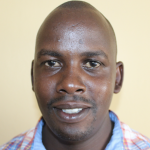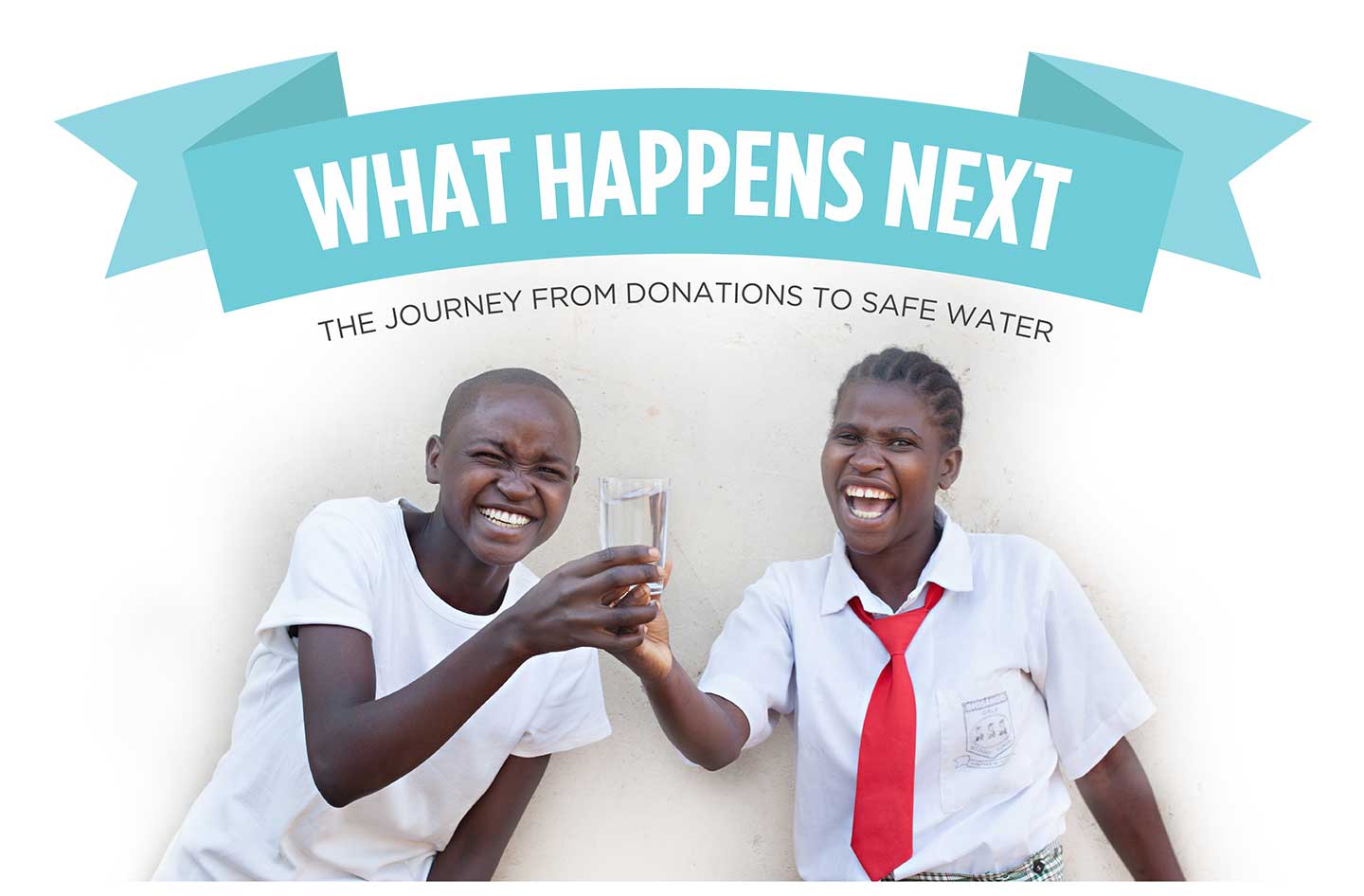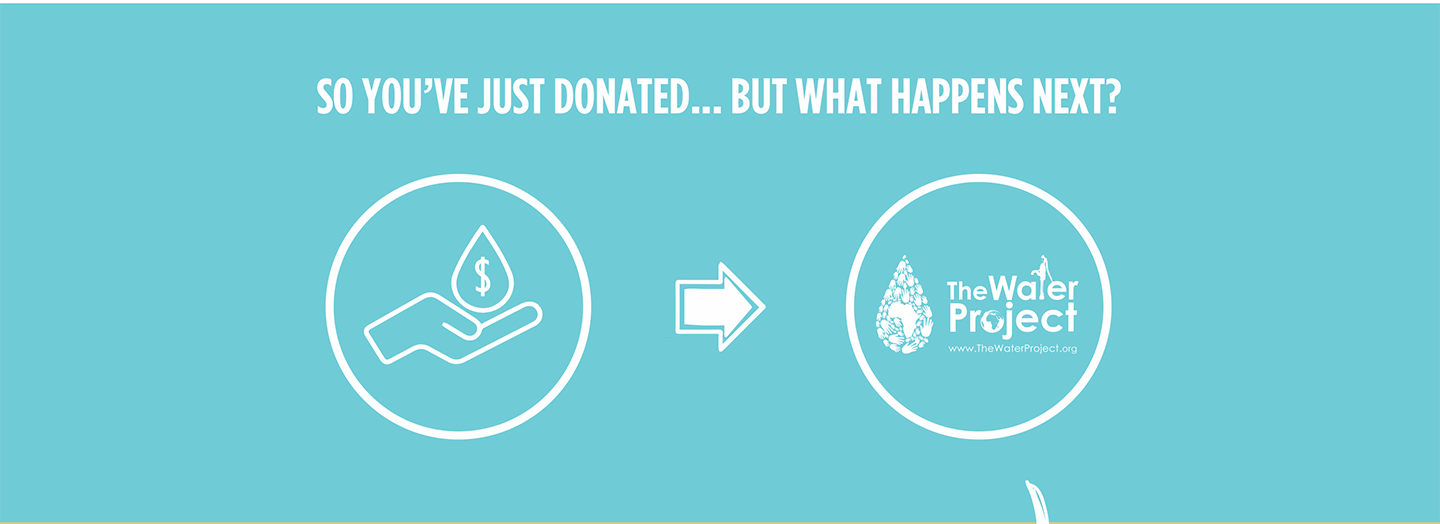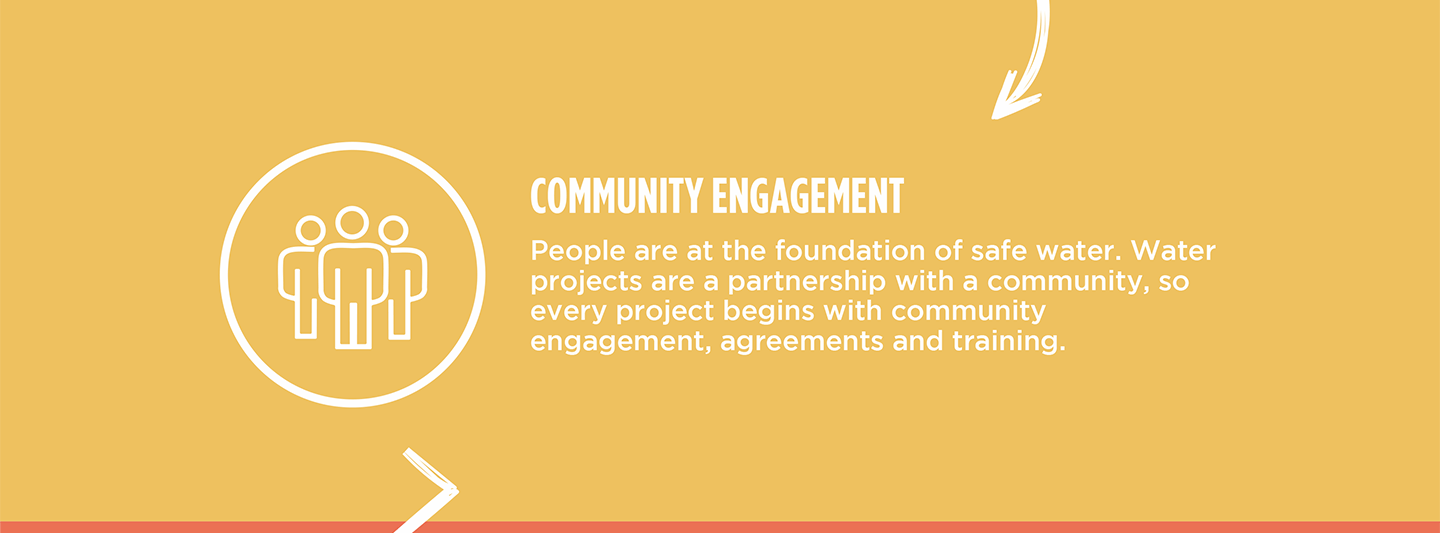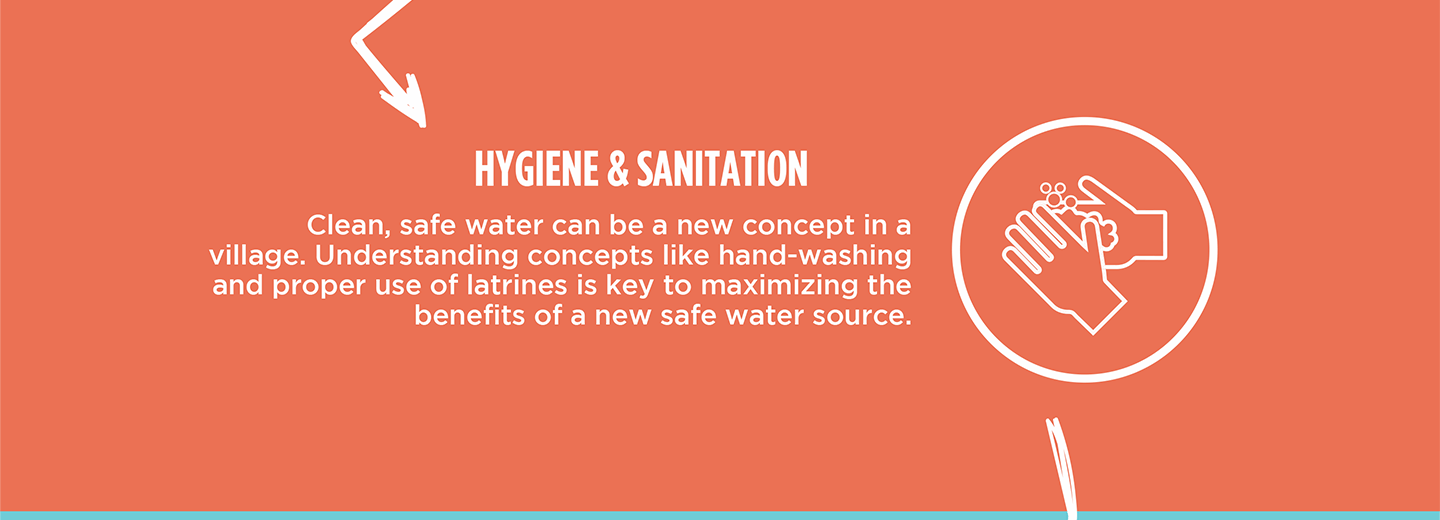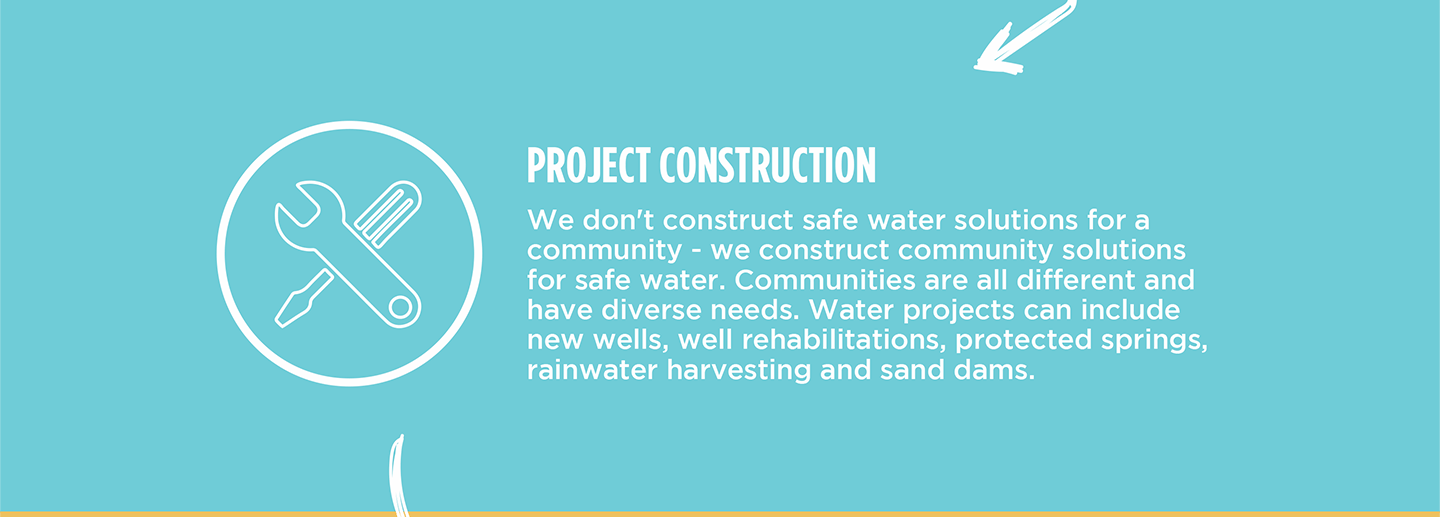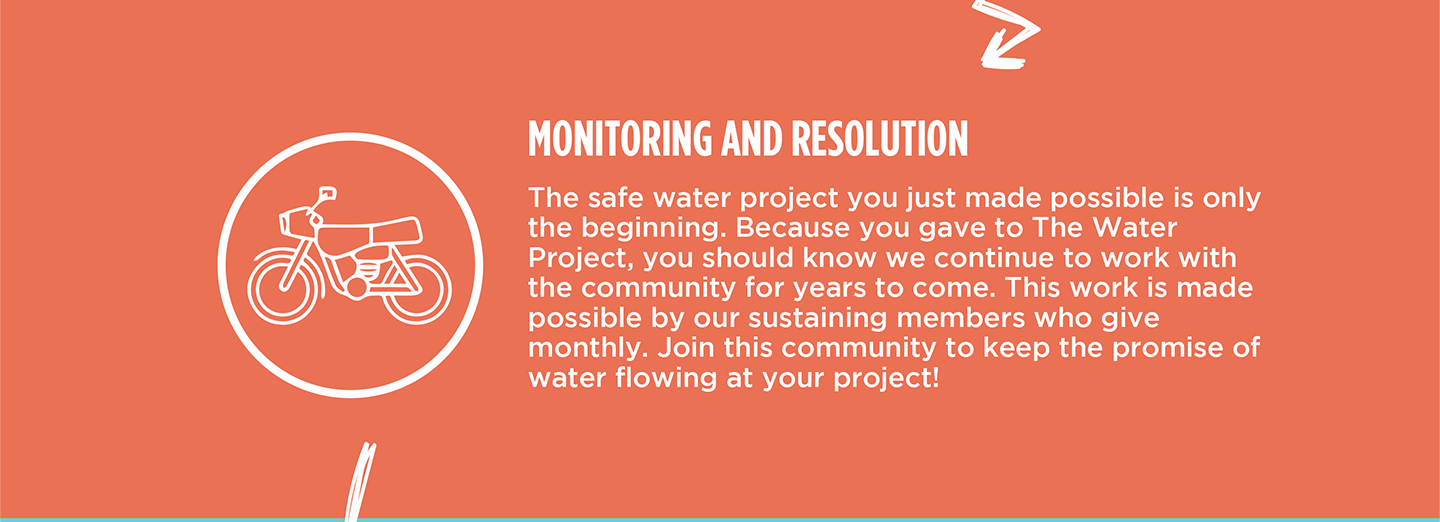At Givogi Primary School, 483 students and 26 staff members struggle to have sufficient water. They have a dug well on campus and rain tanks, but during the drought season, those options run dry, forcing them to travel to an alternative source, taking them off school grounds, offering more problems than solutions.

Students on the hunt for water.
Givogi Primary relies on three main water sources, each with serious challenges: their rainwater harvesting tanks are highly seasonal, often running low or drying up completely during droughts, forcing students to crowd around limited access points. When the tanks fail, students turn to a protected hand-dug well with a submersible pump, but its yield decreases or stops during dry spells as well, and it is costly to operate due to electricity needs, and frequent pump breakdowns add further strain. When all else fails, students must walk off campus to a spring that, while appearing clear, has a fishy odor suggesting contamination. The journey itself exposes them to unsafe terrain and other risks, leaving all three waterpoints stressed by seasonality, cost, and maintenance issues, with the off-campus spring posing the greatest danger.

Students wait for a turn to collect water from the distant spring.
47-year-old Esther Madegesio is a teacher at Givogi Primary. She is familiar with the constant hunt for sufficient water. Though some of her students are boarding students, many are day students. She knows they aren't going home to clean, safe water, and they don't get it at school either right now.
She watches her students struggle to find water and often fall ill from what they drink.

Teacher Esther Madegesio.
"In a recent case, [the] majority of the kids complained of itching eyes after bathing with water sourced from the spring. When we took them for medication in a nearby dispensary, medical personnel said the water was contaminated. After giving some drugs, some responded well, and we came back to school. But [for] some whose problem persisted, we had to call the parents or guardians of the students to take them for further medication. The challenge is so strenuous because you may spend your own money for the student or students to reach [the] dispensary, and even pay for their medication expenses," she shared.
"Drinking water that can harm you is a serious health risk. Simply because water should not endanger life but support it, imagine drinking water which [might] cost your life because of contamination. We should take precautions by ensuring our water sources are safe or treating water before consuming," Esther lamented.

Students search for water.
Sickness doesn't just impact their health and finances, but it also has serious effects on their education. Both teachers and students miss out on crucial classroom time; they're often exhausted from the burden of finding water, leaving any time left in school unproductive.
"Most of the time, we have teachers on duty who make sure learners go for water outside the school compound. The teacher will be overwhelmed because of the duty of going for water outside, and learners will develop negative attitudes towards learning," she added.

Providing a clean water solution can make a significant difference for Esther and her students. Installing a well on campus will provide a reliable water source for the students and staff of Givogi Primary School, ensuring they have access to water right outside their front doors so they can return to the critical task of learning.
Esther spoke of her hopes for the future, "A good number of students will be attended to in every class because of reduced rates of absenteeism. [The] syllabus will be covered on time, hence helping students get enough time for revision, and that will have a positive impact when it comes to exam time. We shall also encounter excellent performances in all areas. Students will be served clean food, and they [will] be learning in clean classroom[s], free from dust, and the storey building boarding section will run well because of plenty of water; hence, the school will be a nice place to be."
Steps Toward a Solution
Schools without reliable, on-premises water access often rely on students to fetch and carry water, leading to rationing and uncertainty about water quality. The water is typically poured into a communal storage tank and used by the entire school. With children carrying water from all different sources, it is also impossible for teachers and staff to know exactly where the water comes from and how safe it is to drink.
A new water point will be located on-premises at the school to ensure accessibility, reliability, and safety for students, teachers, and staff while meeting our school coverage goals. Having water available at the school allows children to drink, wash hands, and use sanitation facilities without leaving school grounds, preventing disruptions to lessons and reducing safety risks. A dedicated source increases water availability, reduces reliance on stored water, minimizes rationing, and ensures confidence in the safety of the water. This means staff and students are healthier, and their lessons aren’t disrupted, contributing to a better education!
Our technical experts worked with the school leadership and local community to identify the most effective solution to their water crisis. They decided to drill a borehole well, construct a platform for the well, and attach a hand pump.
Well
Abundant water often lies just beneath our feet. Aquifers—natural underground rivers—flow through layers of sediment and rock, offering a constant supply of safe water. A borehole well is drilled deep into the earth to access this naturally filtered and protected water. We penetrate meters, sometimes even hundreds of meters, of soil, silt, rock, and more to reach the water underground. Once found, we construct a platform for the well and attach a hand pump. The community gains a safe, enclosed water source capable of providing approximately five gallons of water per minute. Learn more here!
Note: Our proposed water point can only serve 300 people per day. We hope to continue working with this community to identify other water solutions that will ensure all the people in this community have access to safe and reliable drinking water.
Handwashing Stations
Alongside each water source, we install two gravity-fed handwashing stations, enabling everyone at the school to wash their hands. Handwashing is crucial for preventing water-related illnesses within the school and community. Student “health clubs” maintain the stations, fill them with water, and supply them with soap, which we often teach them how to make.
Latrines
We will construct two Ventilated Improved Pit (VIP) latrine blocks designed to prevent fecal disease transmission. Each latrine features a cement floor, making it easy to use and clean regularly. Three stalls will serve the girls, and three will serve the boys.
School Education & Ownership
Hygiene and sanitation training are integral to our water projects. Training is tailored to each school's specific needs and includes key topics such as proper water handling, improved hygiene practices, disease transmission prevention, and care of the new water point.
To ensure a lasting impact, we support forming a student health club composed of elected student representatives and a teacher. These clubs promote hygiene practices schoolwide and keep handwashing stations well-stocked. This student-led model encourages a sense of ownership and responsibility.
Safe water and improved hygiene habits foster a healthier future for everyone in the school and the surrounding community.

 Borehole Well and Hand Pump
Borehole Well and Hand Pump
 Rehabilitation Project
Rehabilitation Project













